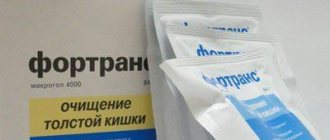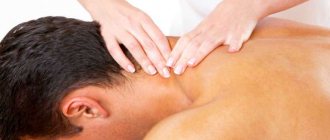Common types of laxatives
Laxatives that increase stool volume
Intestinal bulking laxatives may contain soluble (psyllium, pectin or guar) or insoluble (cellulose) fiber, which is little or not at all digested in the intestine and therefore not absorbed.
They are hydrophilic, absorb water from the intestinal lumen, swell and enlarge, causing stretching of the intestinal walls, which stimulates its pushing functions (propulsive) and accelerates bowel movements due to reflex stimulation.
They also soften the consistency of stool, which makes defecation easier. Bulk laxatives are generally well tolerated by older adults.
Sufficient fluid intake is necessary - up to 2 liters per day!
Bulk laxatives provide an excellent effect for patients with normal gastrointestinal transit function and cannot help people with delayed transit and anorectal dysfunction.
As with increasing consumption of fiber-rich foods, bloating and increased gas production can be a complication of taking laxatives aimed at increasing the volume of stool.
Laxatives that soften stool
Stool softeners, laxatives or stool plasticizers (such as DOCUSATE SODIUM), work by lowering surface tension, allowing water to pass into the intestines more readily.
Stool plasticizers are useful for patients with anal fissures or hemorrhoids that cause painful bowel movements.
Osmotic agents
Osmotic laxatives cause the secretion of water into the intestinal lumen.
In general, these drugs are considered relatively safe because they work in the lumen of the colon and do not have a systemic effect (do not affect the body).
However, for people with congestive heart failure and chronic renal failure, they should be used with caution.
Sorbitol, lactulose and polyethylene glycol, when partially metabolized in the intestines, can lead to flatulence and bloating.
Stimulant laxatives
Stimulant laxatives are preparations based on senna, buckthorn, aloe, rhubarb - laxatives of plant origin. They increase intestinal motility and water secretion into the intestines.
As a rule, defecation occurs within several hours after taking the drug, but cramping pain in the abdomen may occur due to increased peristalsis.
Stimulant laxatives should not be used in patients with suspected intestinal obstruction. Chronic use of stimulant laxatives containing anthraquinone can lead to black-brown pigmentation of the colon mucosa, known as melanosis intestinalis. This is benign but may require discontinuation of stimulant laxatives.
Chewable Constipation Tablets
In this category, most medicines are of plant origin. They have a mild effect and are not addictive. Chewable tablets for constipation are represented by two popular drugs:
- Regulax. The medication is available without a prescription at any pharmacy; the base is the leaves of the senna herb (holly, angustifolia). Cleansing occurs after the medication has an irritating effect on the intestines. This will provoke increased peristalsis and painless emptying. After taking the tablet, the effect occurs within 10 hours.
- Phytolax. This medication is a type of fruit-based dietary supplement. It has an antispasmodic, carminative effect, improves the evacuation function of the intestines, and enhances peristalsis. An adult needs to take 2 anti-constipation tablets: if this is not enough, the dose can be increased to 4 tablets. The effect occurs after 8-10 hours. Cannot be used during breastfeeding or pregnancy.
Find out what quick-acting laxatives there are for adults and children.
Medicines to regulate intestinal motility
Prokinetics
For hypomotor dyskinesia of the colon, prokinetics are prescribed, which speed up the time it takes for food to pass through the large intestine, improve stool consistency and frequency in older people, and are used to treat chronic constipation.
Antispasmodics
Surprisingly, in some cases, constipation is caused not by weak intestinal motility, but, on the contrary, by its excessive activity - to the point of spasms.
Therefore, for spastic intestinal dyskinesia, antispasmodics of myotropic action are prescribed.
Laxatives for the treatment of constipation - table
| A drug | Mechanism of action | Effect | Possible side effects |
| Lubiprostone | Type 2 chloride channel activator | Secretion of chloride into the intestinal lumen followed by passive diffusion of sodium and water. An increase in water in the fecal contents with stretching of the intestinal walls and activation of peristalsis and acceleration of the transit of chyme through the intestines | Nausea, headache. |
| Linaclotide Plecanatide | Guanylate cyclase C receptor agonist. | Increased intra- and extracellular cyclic guanosine monophosphate. Increased secretion of chloride, bicarbonate and water into the intestinal lumen. Activation of peristalsis and acceleration of intestinal transit. | Dose-dependent diarrhea. |
| Prucaloprid Velusetrag Norcisapride | 5-HT4 serotonin receptor agonist | Stimulates the activity of plexuses of neurons in the muscular lining of the intestine. Activation of peristalsis and acceleration of intestinal transit. Release of acetylcholine. | Headache, nausea, diarrhea. |
| Elobixibate | Enantiomer of 1,5-benzothiazepine. | Inhibits the transport of bile acid in the ileum. Increases the presence of bile acids in the colon. Activation of peristalsis and acceleration of intestinal transit. | Abdominal pain, diarrhea. |
Selection of fast-acting laxatives
Laxatives are divided into several groups. Osmotic and bulk laxatives are gentle and suitable for long-term use.
The effect of their use most often occurs the next day after administration, so they are not suitable as an emergency remedy for constipation.
Irritating laxatives help to quickly empty your bowels. Their mechanism of action is based on irritation of intestinal receptors by chemical components, which leads to increased peristalsis. Emptying occurs approximately 6-10 hours after using the drugs. Frequent effects on the intestines of irritating laxative drugs are contraindicated.
Any laxatives only help empty the intestines, but do not relieve the cause of constipation.
A fast-acting laxative can also be selected from the group of rectal suppositories. Particular attention is paid when prescribing laxative medications if constipation occurs in pregnant women or children. For these categories of patients, most strong laxatives are contraindicated, so you should always carefully study the medication label.
Constipation pills
When choosing fast-acting laxatives, most people prefer tablets, drops or powders. They are convenient to drink and can be taken with you on a business trip or travel.
The drugs described in the table have a pronounced laxative effect:
| Drug name | Mechanism of action | Dosage | Side effects |
| Bisacodyl (Dulcolax, Laxbene, Bisad) | Under the influence of the chemical components of the drugs, the receptors of the intestinal walls are irritated, peristalsis is enhanced, and at the same time, dense feces are softened. Emptying occurs after 6-10 hours. | It is recommended to take 1 tablet before bedtime. | Abdominal pain, cramps, dehydration with prolonged use. |
| Senadexin (Regulax, Senade, Tisasen) | They are also treated with an irritating laxative, but these remedies are based on substances of natural origin. The laxative effect occurs within 6-12 hours. | It is better to use before bedtime, the dosage is determined by the form of the drug. | Adverse reactions are similar to Bisacodyl and its analogues. |
| Sodium Picosulfate (Guttasil, Slabilen) | They act on the receptors of the colon, emptying occurs after 10-12 hours. | Take one to two hours before bedtime. | Abdominal pain, decreased blood pressure, and long-term use leads to dehydration. |
Irritating laxatives are not prescribed during pregnancy, especially in the 1st and 3rd trimester. Long-term use leads to addiction and the development of intestinal atony. The most inexpensive products from this group are plant-based preparations - Senade, Regulax.
Rectal suppositories to facilitate bowel movements
For occasional problems with stool, rectal suppositories will help to quickly induce bowel movements:
- Glycerin
. They gently irritate the mucous walls of the rectum, stimulating peristalsis. They almost never cause unwanted reactions, but they are not allowed to be used in the acute phase of hemorrhoids and inflammation of the anal canal area. - Sea buckthorn
. The sea buckthorn fruit oil included in the suppositories softens dense feces, which facilitates their exit from the intestines. Sea buckthorn suppositories promote tissue regeneration, so their use is justified if constipation is combined with hemorrhoids, inflammation and anal fissures. - Papaverine based suppositories
. They have the mildest laxative effect, but provide good pain relief and relieve spasms. Therefore, it is better to use them if difficulties during emptying are associated with exacerbation of hemorrhoidal disease.
The components of rectal suppositories are not absorbed into the systemic bloodstream, so they do not harm the body. But still, you cannot use them constantly, as this will lead to addiction.
A way to induce bowel movements similar to rectal suppositories is to use a candle made from laundry soap. Under its influence, irritation of the lower intestines occurs and peristalsis increases. This method is not suitable for everyone, since soap can cause pain and burning.
Gas-forming suppositories
The composition of gas-forming rectal suppositories includes sodium bicarbonate, which, after dissolving the suppository, is converted into carbon dioxide. The formation of bubbles promotes stretching of the intestinal ampulla and activates the functioning of receptors; under the influence of suppositories, peristalsis is enhanced and the movement of accumulated feces is facilitated.
The effect of using rectal suppositories for constipation can be enhanced by diet therapy including a large amount of herbal products and sufficient water intake.
Gas-forming candles include Calciolax, Ferrolax, Evacue. It is recommended to use them once every 24 hours, approximately 15-20 minutes after breakfast. Suppositories with gas-forming components are not prohibited for use for occasional problems with bowel movements in pregnant women.
Magnesium sulfate
Fast-acting remedies for constipation include Magnesium sulfate. The drug is produced in powder form and as an injection solution. In case of prolonged absence of stool, it is better to use magnesium powder. Its use has several effects on the intestines:
- increases osmotic pressure, thereby improving intestinal motility;
- attracts water, which helps soften dry stool;
- relaxes the muscle layer of the intestines, facilitating the passage of feces.
Magnesium sulfate begins to act a few hours after administration. If you take it during the day, the laxative effect will occur within 3-4 hours. A magnesium solution drunk at night leads to bowel movements in the morning.
Magnesia is often used for weight loss; the drug helps cleanse the intestines and normalizes bowel movements.
An adult needs from 10 to 30 grams of powder. Dilute them in 100 ml of warm water and drink slowly. Magnesium sulfate is also approved for relieving constipation in children over 3 years of age. Children's dosage: 1 gram of powder per kilogram of weight.
Magnesium sulfate is used with caution for constipation if there are diseases of the kidneys, liver and cardiovascular system.
Microlax
Microclyster Microlax is another way to quickly cleanse the intestines of accumulated contents in emergency cases. It consists of several components, under the influence of which the flow of water into the large intestine is increased and at the same time the liquid present in the stool is displaced. This mechanism of action facilitates the movement of contents, which leads to defecation.
The modern laxative Microlax begins to act 5-15 minutes after the administration of the microenema. In rare cases, bowel movement occurs within an hour. The drug does not cause adverse reactions, since its components do not penetrate into the systemic circulation. There may only be a slight burning sensation immediately after applying the product, which will go away quickly.
Microlax has no contraindications, except for increased hypersensitivity to the components of the gel. Microenemas can be used as an emergency aid for persistent constipation in children, the elderly and pregnant women.
Introducing the gel is very simple - each microenema has a tip made of soft material. The solution is injected completely, the tube is removed from the rectum in a compressed state. For children under three years of age, the tip is inserted halfway up to the specially marked scale. The dosage of the drug for this age category is selected individually, usually it is half the solution - 2.5 ml.
Laxatives for weight loss
Some people take laxatives to lose weight.
However, studies have shown that the drugs are not only not effective for weight loss, but can also be dangerous when used for this purpose.
Any weight loss that is achieved through laxative-induced bowel movements does not remove calories, fat, or food from the body. This is called "water weight" and will return when you drink enough fluids.
Laxatives for children
In some cases, laxatives may be needed to treat constipation in a child.
Intoxic is an anthelmintic that safely removes parasites from the body. Intoxic is better than antibiotics because: 1. It kills parasites in a short time and gently removes them from the body. 2. Does not cause side effects, restores organs and reliably protects the body. 3. Has a number of medical recommendations as a safe remedy. 4. Has a completely natural composition.
There are various formulations of medications made specifically for children.
Talk to your doctor before giving your child a laxative.
Irritants
These constipation medications can work quickly. The result occurs 6-10 hours after use. The ranking of the best laxatives of this type includes Guttalax, Laxatin, Senade and Regulax.
These medications can harm your body if taken with alcohol. For cleansing to take place without consequences, irritating drugs should be taken after consultation with a doctor.
Are there other ways to treat chronic constipation?
Of course, if constipation is not caused by pathological changes in the body, restoring normal bowel movements is possible using non-drug methods - increasing fluid intake, adding fiber, consuming fruits and vegetables, physical activity, massage for constipation, etc.
The same techniques are recommended when treating the problem in addition to laxatives.
And if you don’t trust pharmaceutical drugs, look at herbal laxatives for constipation at home.
Laxative during pregnancy
During pregnancy, doctors generally do not recommend using drugs that cause increased intestinal motility, preferring increased physical activity and nutritional correction. But if this does not help, doctors advise taking drugs with the following names: Microlax, Guttalax, Duphalac.
The first medicine is sold as an enema, which gently relieves constipation. The use of Guttalax is allowed only in the 2-3 trimesters of pregnancy.
Duphalac is a mild remedy that does not cause addiction.
Vikalin is popular among pregnant women and gives a mild laxative effect.
But the best method, and also a cheap one, that will help get rid of constipation during pregnancy is the use of glycerin suppositories.












